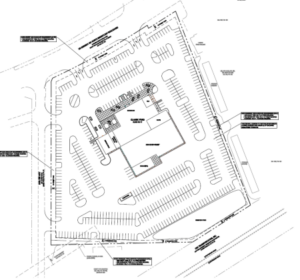A Post-Pandemic Question on Factory Facility Requirements
I’ve been wondering if the shakeout from the COVID-19 pandemic across the retail automotive industry will result in any significant changes in the requirements factories  place on dealers for their facilities.
place on dealers for their facilities.
The question arrives after hearing dealer after dealer tell me they don’t plan to bring all of their employees back to work who were either furloughed or laid off as the pandemic disrupted the industry. This week’s Automotive News brings a piece that suggests that the industry will lose 5 percent to 10 percent of the jobs it provided prior to the pandemic. The article also notes that permanent staff reductions at public dealer group run close to 15 percent.
The job reductions resulted because dealers closed their businesses and, for at least a few weeks, were selling far fewer cars than they had been. At the same time, as the retail business picked up, many dealers realized that they could do more with less, thanks to digital retailing tools and remote work models they adopted to serve sales and service customers.
No matter how you slice it, these developments raise a key question about the role of dealership facilities, and whether the size and standards of the facility investments factories require of dealers make sense moving forward. I know of at least one dealer in the Northeast who doesn’t have any current plans to fully re-open his dealership facilities, despite the millions he invested to build and maintain them. The dealer’s gone digital and, until he’s convinced COVID-19 doesn’t pose a risk for his employees or customers, he’ll continue selling cars and scheduling service visits via online tools.
I spoke to a buy/sell expert this week who says that, at least for the moment, factories don’t seem as focused on facility requirements as they evaluate ownership transfers. Instead, they are more concerned about profitability and the safety of their dealership work teams. “The factories are aware and thinking about how the processes for selling and servicing cars have changed,” the expert says.
We also know that OEMs are rethinking what’s right for their own work facilities and teams. Last week, an Automotive News article highlighted how some factory executives may allow some employees to continue working remotely long-term rather than return to traditional office settings. Like many of us, the factories are learning that working in offices may not be as necessary for optimal levels of performance and productivity as we previously believed.
When it comes to factory facility requirements for dealers, it’ll be important for factories to recognize how much the car business has and could change as a result of the pandemic. Perhaps the mandates for big showrooms and service waiting areas should be less important as consumers look to engage dealers in a different, online-driven fashion. Perhaps the number of service stalls factories require could be fewer as dealers discover more efficient ways to schedule customers and technician workloads.
It’s my hope that factories recognize that the moment is ripe to rethink facility requirements. Maybe we’ll enter an era where dealers welcome factory facility mandates rather than view them as many have in recent years—as a source of potential financial harm, friction and frustration.
